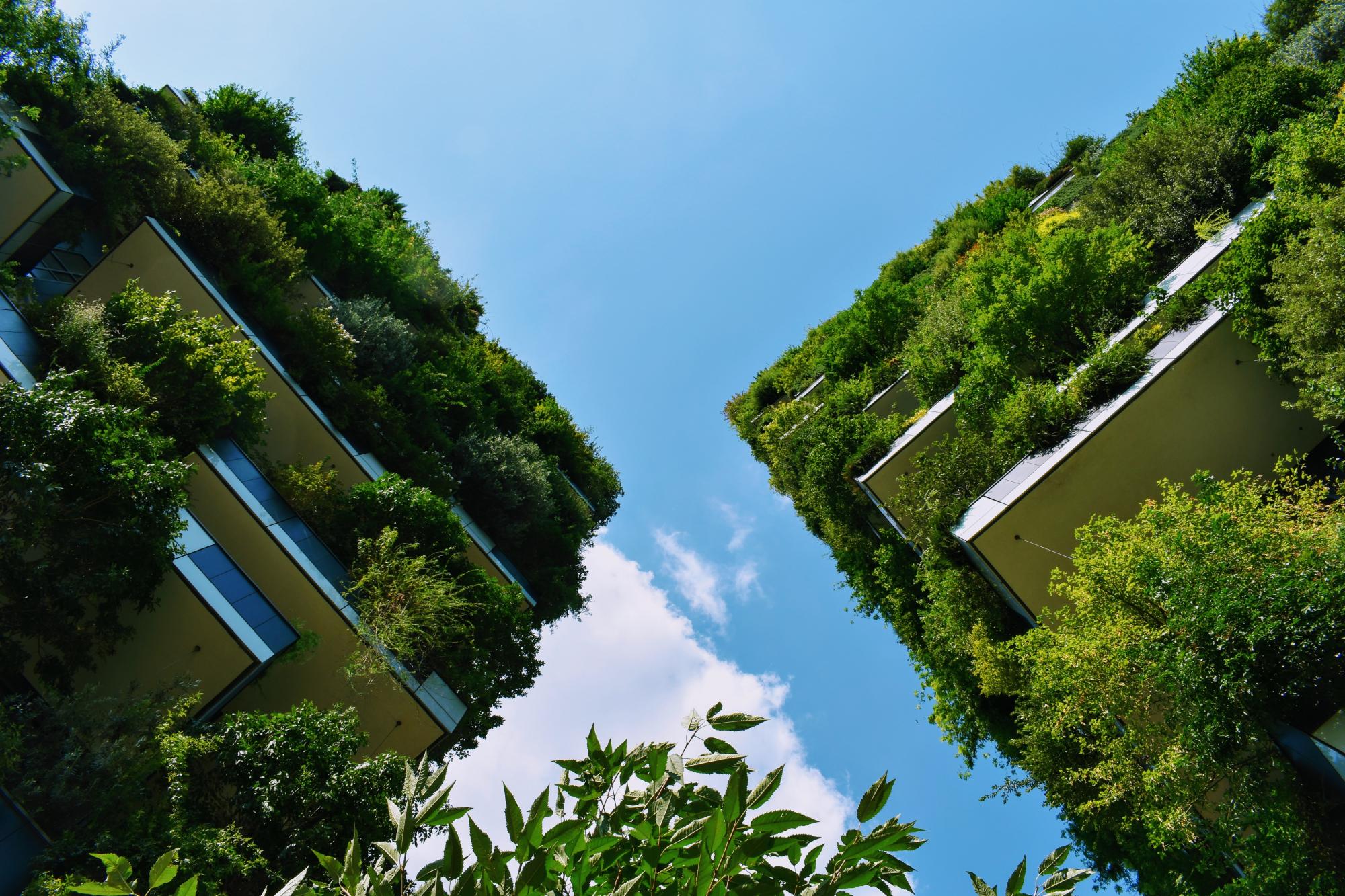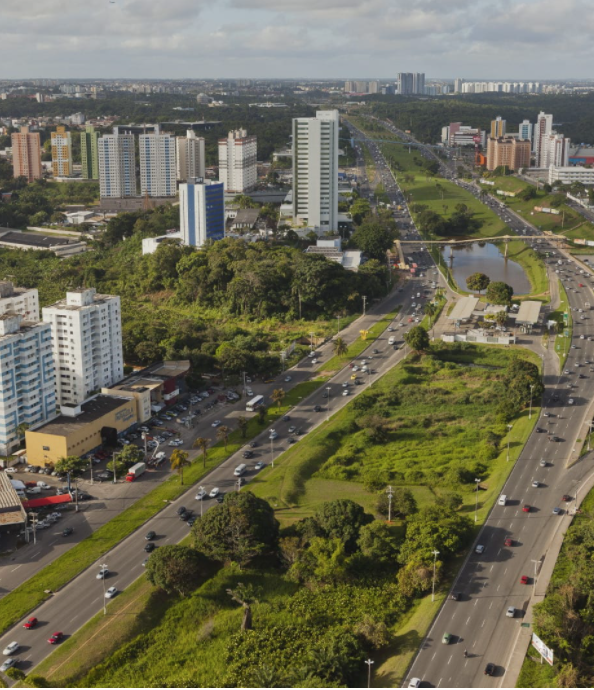Last updated: November 2021
Recognising the benefits which urban forests bring to its citizens, Salvador has committed to protecting and restoring the Atlantic Forest, and has developed its own local framework which goes beyond national requirements (Ref. 1). The city has launched several programmes under its 'Salvador, Capital da Mata Atlantica' initiative, which together aim to restore the forest which has "suffered from severe deforestation" (Ref. 1). Included under the umbrella initiative are programmes such as the "'Delivery of trees', recovery of parks and collective planting" (Ref. 4).
Overview
Nature-based solution
- Nature on buildings (external)
- Green roofs
- Grey infrastructure featuring greens
- Alley or street trees and other street vegetation
- House gardens
- Green playgrounds and school grounds
- Institutional green space
- Parks and urban forests
- Large urban parks or forests
- Pocket parks/neighbourhood green spaces
- Green corridors and green belts
Key challenges
- Climate action for adaptation, resilience and mitigation (SDG 13)
- Climate change adaptation
- Water management (SDG 6)
- Flood protection
- Improvements to water quality
- Green space, habitats and biodiversity (SDG 15)
- Habitat and biodiversity restoration
- Habitat and biodiversity conservation
- Green space creation and/or management
- Environmental quality
- Air quality improvement
- Waste management
- Social justice, cohesion and equity (SDG 10)
- Social interaction
- Health and well-being (SDG 3)
- Enabling opportunities for physical activity
- Creation of opportunities for recreation
- Economic development and employment (SDG 8)
- Tourism support
Focus
Creation of new green areas, Ecological restoration of ecosystems, Protection of natural ecosystems, Transformation of previously derelict areas
Project objectives
The Secretariat of Sustainability, Innovation and Resilience intended that the intervention should "boost awareness of the critical roles trees play in cities—not just urban trees within city limits, but the forests outside of them as well" (Ref. 1). Acknowledging the severe deforestation which the Atlantic Forest had been subject to - with <20% of the original forest remaining, and only 7% remaining "in good condition" - the city intended that urban reforestation should increase the resilience of Salvador's residents by increasing the provision of potential ecosystem services which could be garnered from forests (Ref. 1).
With this project, the city hopes to increase the provision of critical ecosystem services which the Atlantic Forest can provide to its urban residents, including "ensuring a consistent and clean water supply, regulating temperature, purifying the air, improving hydroelectric generation, limiting flooding, safeguarding unique plant and animal species, and encouraging local economic development" (Ref. 1).
Implementation activities
The project seeks to articulate several initiatives, integrating actions and transforming public and institutional spaces to promote sustainability of the Atlantic Forest, especially so through the physical implementation of parks for the System of Areas of Environmental and Cultural Value – SAVAM, member of the current Urban Development Master Plan, Act 9.069/2016, which is part of a climate resilience strategy for communities" (Ref. 2). Through the implementation of a local reforestation strategy that surpassed national requirements, Salvador city's initiative "help[s to] ensure [that] global and national goals to end deforestation, restore forests and fight climate change succeed on the ground" (Ref. 1).
Within the umbrella programme, several initiatives exist and a total of 15 actions are drawn up to realise the objectives of the programme. As illustrated by Ref. 2, these are:
- Recovery of Salvador’s Botanical Garden, including installation of a roof garden;
- Municipal Plan for the Atlantic Forest Conservation and Recovery (PCRMA);
- Center for Interpretation of the Atlantic Forest;
- Please Water Me (media campaign);
- Atlantic Forest Caravan (community tree planting, where saplings are delivered to residents by a "green-roofed vehicle loaded with tree seedlings, topsoil, and fertilizer");
- Barra’s Marine Park (creation of a marine life nursery);
- My Tree (creation of an open web/mobile georeferencing platform for residents and the state to register and monitor plantings);
- Forest Restoration of the Canabrava Landfill (reforestation of "an old open skies landfill that used to keep all the waste produced by Salvador, and that remained active for 30 years");
- Green Eco-Corridors (reforest areas which would connect spaces and preserve biodiversity);
- Biodiversity in Parks and Squares (introduce birds, butterflies and other insects across the city, stimulating local biodiversity and community engagement);
- Wind Park (creation of a social co-existence wind park on an area of 86,500m2);
- Vale Encantado Ecological Park (renovation of the park);
- "Ilha dos Frades" Eco-Station (implementation of an eco-station in "a privileged space for Atlantic Forest conservation".
Through the implementation of these activities, numerous following sustainability challenges are intended to be addressed. Sustainability challenges addressed and one or two examples of (an) action/intervention which hopes to achieve each of these challenges are presented below:
- Climate change adaptation; Municipal Plan for the Atlantic Forest
Conservation and Recovery (Ref. 2), also see Ref. 1 for a summary of how the programme as a whole promotes climate change adaptation;
- Flood protection; programme as a whole (Ref. 1);
- Improvements to water quality; programme as a whole (Ref. 1);
- Habitat and biodiversity conservation and restoration; Green Eco-Corridors (Ref. 2)
- Green space creation and/or management; Green Eco-Corridors and Atlantic Forest Caravan (Ref. 2);
- Air quality improvement; programme as a whole (Ref. 1);
- Social cohesion and social interaction; Biodiversity in parks and squares (Ref. 2);
- Environmental education; My Tree and Centre for Interpretation of the Atlantic Forest (Ref. 2);
- Enabling physical activity and creating opportunities for relaxation and recreation; “Parque dos Ventos” (Wind Park) and Vale Encantado Ecological Park (Ref. 2);
- Tourism support; Barra’s Marine Park (Ref. 2);
Climate-focused activities
Climate change adaptation:
- Increase or improve urban vegetation cover to help reduce outdoor temperature
- Create or improve outdoor spaces to help people escape from urban heat
Biodiversity conservation or restoration-focused activities
Biodiversity conservation:
- Protect and enhance urban habitats
- Preserve and strengthen existing habitats and ecosystems
- Create new habitats
- Preserve and strengthen habitat connectivity
- Means for conservation governance
- Raise public awareness
- Public engagement
Biodiversity restoration:
- Rehabilitate and restore damaged or destroyed ecosystems
- Restore species (native, endangered, or unspecified)
- Restore native species
- Restore ecological connectivity
- Public engagement
Main beneficiaries
- Citizens or community groups
Governance
Management set-up
- Government-led
Type of initiating organisation
- Regional government
- Local government/municipality
Participatory approaches/ community involvement
- Unknown
Details on the roles of the organisations involved in the project
Salvador's Municipal Secretariat of Sustainability, Innovation and Resilience is piloting the programme (Ref. 1).
Project implemented in response to ...
... an EU policy or strategy?
No
... a national policy or strategy?
Yes
(Salvador is "obligated by Brazil's national Forest Code and a 2006 federal law to protect the Atlantic Forest, [yet] they have developed their own local frameworks to go beyond the national requirements" (Ref. 1).)
... a local policy or strategy?
Yes
(The intervention is outlined by the city's Resilience Strategy, "which is included in the “Sustainable City” axis of the Salvador 360 Program" (Ref. 3). Within this Strategy, the Atlantic Forest Restoration, Recovery Municipal Plan, and the Climate Change Plan have been developed (Ref. 3). The city further "has a Master Plan for Urban Afforestation and a technical manual for planting native trees compatible with local infrastructure" (Ref. 3).)
Financing
Total cost
Unknown
Source(s) of funding
- Unknown
Type of funding
- Unknown
Non-financial contribution
Unknown
Impacts and Monitoring
Environmental impacts
- Climate change
- Lowered local temperature
- Enhanced carbon sequestration
- Environmental quality
- Improved air quality
- Water management and blue areas
- Improved water quality
- Increased protection against flooding
- Green space and habitat
- Increased green space area
- Increased conservation or restoration of ecosystems
- Increased conversion of degraded land or soil
- Reduced biodiversity loss
- Increased number of species present
- Enhanced support of pollination
- Increased spread of native/heirloom/open-pollinated seed
- Increased ecological connectivity across regeneration sites and scales
Economic impacts
- More sustainable tourism
- Increase in agricultural production (for profit or not)
- Generation of income from NBS
Socio-cultural impacts
- Safety
- Improved community safety to climate-related hazards
- Social justice and cohesion
- Improved social cohesion
- Improved access to urban green space
- Increased opportunities for social interaction
- Health and wellbeing
- Improved physical health
- Gain in activities for recreation and exercise
- Education
- Increased support for education and scientific research
- Increased knowledge of locals about local nature
Type of reported impacts
Expected impacts, Achieved impacts
Presence of formal monitoring system
Unknown
Presence of indicators used in reporting
No evidence in public records
Presence of monitoring/ evaluation reports
No evidence in public records
Availability of a web-based monitoring tool
No evidence in public records
References
1. Ray, S., Anderson, W., Chuaire, M. F. (2019). A Tale of Two Cities in Brazil (and the Forest that Connects Them). Washington DC: World Resources Institute. Source link [accessed 11/11/21];
2. Salvador Prefeitura (n.d.). Resilient Salvador. Salvador: Salvador Prefeitura & The Rockefeller Foundation. Source link [accessed 11/11/21];
3. Salvador Prefeitura & Secretaria Municipal de Sustentabilidade Inovação e Resiliência (n.d.). Salvador Brazil. Washington DC: Cities4forests. Source link [accessed 11/11/21];
4. Estúdio Correio. (2019). Salvador Capital da Mata Atlântica: conheça ações do programa premiado mundialmente. Salvador: Estúdio Correio. Source link [accessed 11/11/21]; and
5. Nova Mata (n.d.). Salvador Capital da Mata Atlântica. Bahia: Nova Mata. Source link [accessed 11/11/21].
2. Salvador Prefeitura (n.d.). Resilient Salvador. Salvador: Salvador Prefeitura & The Rockefeller Foundation. Source link [accessed 11/11/21];
3. Salvador Prefeitura & Secretaria Municipal de Sustentabilidade Inovação e Resiliência (n.d.). Salvador Brazil. Washington DC: Cities4forests. Source link [accessed 11/11/21];
4. Estúdio Correio. (2019). Salvador Capital da Mata Atlântica: conheça ações do programa premiado mundialmente. Salvador: Estúdio Correio. Source link [accessed 11/11/21]; and
5. Nova Mata (n.d.). Salvador Capital da Mata Atlântica. Bahia: Nova Mata. Source link [accessed 11/11/21].
Caravana Mata Atlântica
https://resilientcitiesnetwork.org/downloadable_resources/Network/Salvador-Resilience-Strategy-English.pdf
Information about this nature-based solution was collected as part of the UNA global extension project funded by the British Academy.



